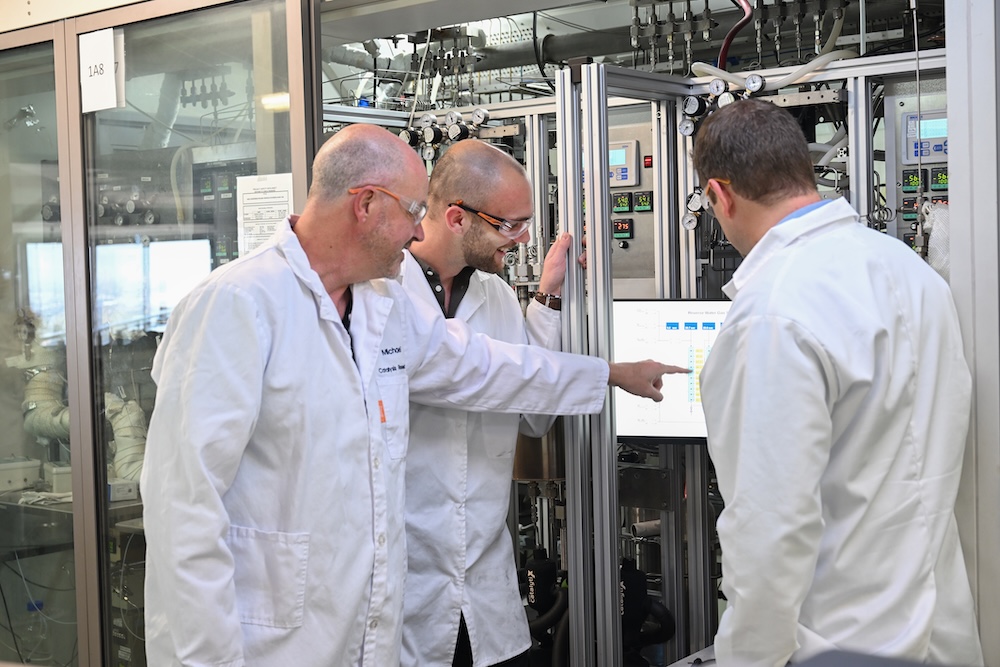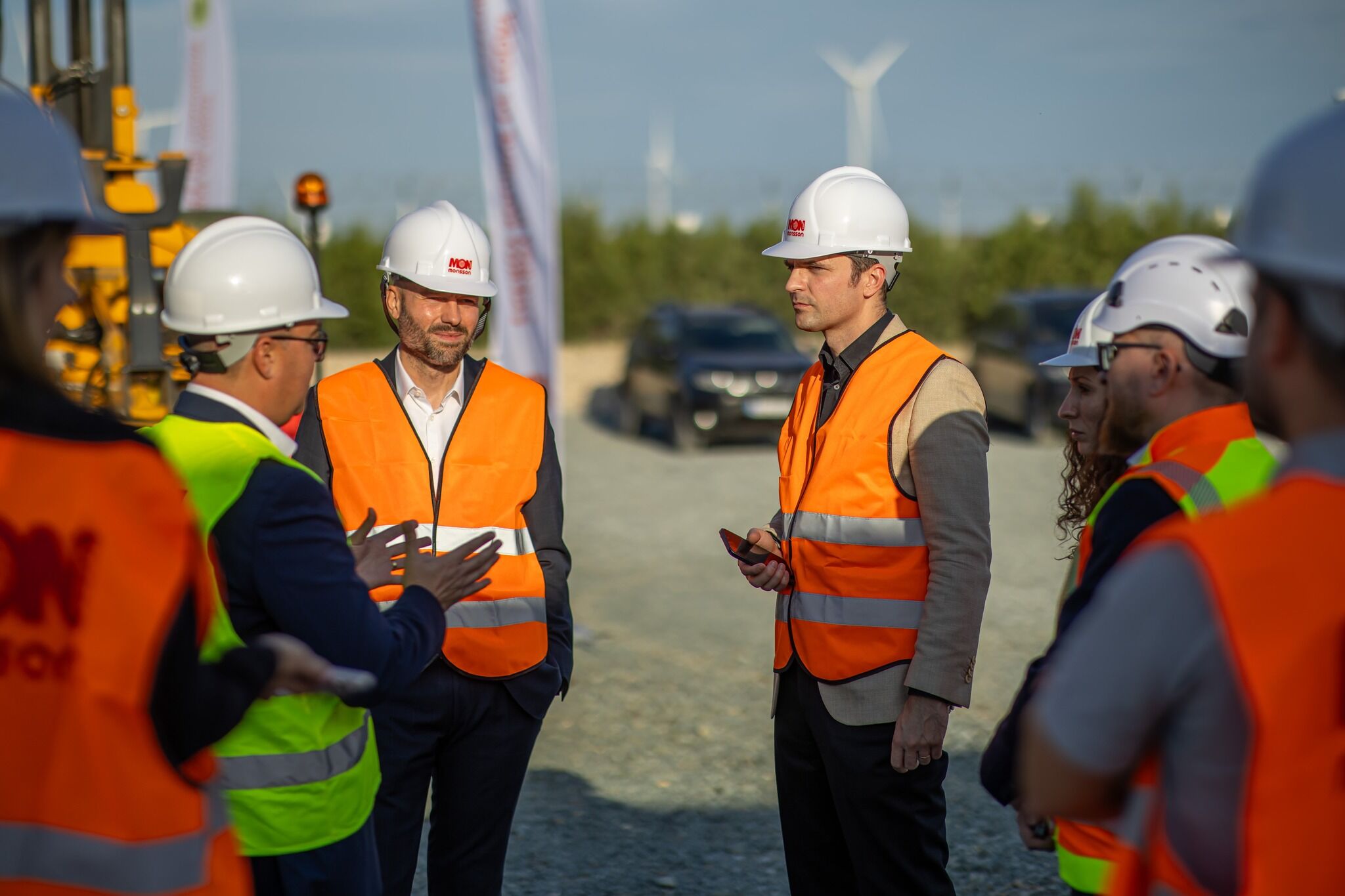Report on Community Deliberations Regarding Battery Energy Storage Systems in Vacaville
Introduction: Balancing Clean Energy with Community Sustainability
A community meeting was convened in Vacaville, California, to address the future development of Battery Energy Storage Systems (BESS). These facilities are critical for advancing Sustainable Development Goal 7 (Affordable and Clean Energy) and SDG 13 (Climate Action) by storing energy from renewable sources for use during peak demand. However, recent safety incidents, including a fire at a major California facility, have raised significant local concerns, bringing the project into direct dialogue with SDG 11 (Sustainable Cities and Communities), which emphasizes community safety and resilience.
Community Concerns and Public Safety
Residents voiced strong opposition to the potential construction of a BESS facility, citing risks that challenge the core objectives of creating safe and sustainable communities (SDG 11). The primary concerns articulated by community members include:
- Fire Hazards: The significant risk of fires that are difficult to extinguish.
- Thermal Runaway: The potential for uncontrollable, self-heating chemical reactions within the batteries.
- Community Risk vs. Benefit: A sentiment that Vacaville would be assuming substantial risks to benefit other communities, as articulated by resident Cara Eich.
- Lack of Local Control: Apprehension that state-level approvals could override local safety and planning considerations.
Proposed Regulatory Framework for Sustainable Infrastructure
In response to these concerns, the City of Vacaville is developing a local ordinance to regulate BESS facilities. This initiative aims to establish a framework that aligns the deployment of clean energy infrastructure (SDG 7) with local safety and planning standards (SDG 11). Key provisions of the proposed ordinance include:
- Safety Buffer Zones: A mandatory 300-foot buffer zone around each facility.
- Strategic Siting: Locating facilities in areas where no future housing development is planned to protect residential zones.
- Enhanced Safety Parameters: Establishing clear local regulations to ensure facilities are built and operated safely.
According to Erin Morris, the Community Development Director, a local law must be in place by April of the following year.
Challenges in Governance and Institutional Collaboration
The discussion highlighted a significant governance challenge related to SDG 16 (Peace, Justice and Strong Institutions), which promotes effective and accountable institutions at all levels. A 2022 state law permits energy developers to bypass local government approval and seek certification directly from the California Energy Commission. This circumvents the countywide moratorium currently in place.
The proposed city ordinance represents an attempt by local government to assert its interests. While the local ordinance would not be binding on projects approved through the state process, city officials believe it can serve as a powerful tool. Morris stated the city can “review these proposals through the lens of our local regulations and then try to push the state to implement our local regulations,” fostering a partnership that respects local interests while pursuing state-level energy goals.
Conclusion and Next Steps
The City of Vacaville is actively gathering community feedback to inform the drafting of its BESS ordinance, with a draft expected in early November. This process exemplifies a local effort to navigate the complexities of achieving national and global sustainability targets, ensuring that the pursuit of SDG 7 (Affordable and Clean Energy) and SDG 13 (Climate Action) does not compromise the immediate safety and well-being of residents as outlined in SDG 11 (Sustainable Cities and Communities). The outcome will depend on the ability of local and state institutions to collaborate effectively, in line with the principles of SDG 16.
Analysis of Sustainable Development Goals in the Article
-
Which SDGs are addressed or connected to the issues highlighted in the article?
The article on the Vacaville community’s response to battery energy storage systems touches upon several interconnected Sustainable Development Goals (SDGs). The primary goals identified are:
-
SDG 7: Affordable and Clean Energy
The article’s central topic is “battery energy storage systems,” which are a critical technology for modernizing the energy grid. These systems “store energy for use during peak demand,” enabling greater integration of intermittent renewable energy sources like solar and wind, thus contributing to a cleaner and more reliable energy supply.
-
SDG 9: Industry, Innovation, and Infrastructure
Battery energy storage facilities represent a new form of critical infrastructure. The community’s discussion revolves around ensuring this infrastructure is developed in a safe, resilient, and sustainable manner. The debate over local versus state regulation and the need for safety standards reflects the challenge of integrating innovative technologies into existing industrial and community landscapes.
-
SDG 11: Sustainable Cities and Communities
This is a core SDG in the article. The entire narrative is about a local community, Vacaville, engaging in urban planning and governance. Residents are actively participating in a “community meeting” to influence a “proposed city ordinance.” Their concerns about “fire hazard,” “thermal runway,” and the proximity of these facilities to homes directly relate to making human settlements safe, resilient, and sustainable.
-
SDG 13: Climate Action
While not explicitly mentioned, battery energy storage is a key enabling technology for climate action. By providing a way to store energy from renewable sources, these facilities are essential for reducing reliance on fossil fuels and mitigating climate change. The challenges discussed in the article are part of the broader process of implementing climate solutions.
-
SDG 17: Partnerships for the Goals
The article clearly illustrates the complex interplay between different stakeholders. It highlights a conflict in policy coherence between a “2022 state law” that allows developers to bypass local approval and the city’s effort to establish its own “local ordinance.” The city’s aim to “build a better partnership with energy companies and the state” underscores the need for effective public-private and inter-governmental partnerships to achieve sustainable development.
-
-
What specific targets under those SDGs can be identified based on the article’s content?
Based on the issues discussed, the following specific SDG targets are relevant:
-
SDG 7: Affordable and Clean Energy
- Target 7.a: Promote investment in energy infrastructure and clean energy technology. The construction of battery energy storage facilities is a direct investment in this type of infrastructure.
-
SDG 9: Industry, Innovation, and Infrastructure
- Target 9.1: Develop quality, reliable, sustainable and resilient infrastructure. The residents’ concerns about fire risks and the city’s proposed safety regulations are aimed at ensuring this new infrastructure is resilient and does not pose a threat to the community.
-
SDG 11: Sustainable Cities and Communities
- Target 11.3: Enhance inclusive and sustainable urbanization and capacity for participatory, integrated and sustainable human settlement planning and management. The “community meeting” where “dozens of residents voiced their opposition” and the city’s effort to “gather feedback to better draft the ordinance” are direct examples of participatory planning.
- Target 11.5: Significantly reduce the number of people affected by disasters. The community’s fear of fire hazards (“the risk just from the fire hazard is so great”) and the proposed ordinance’s safety measures are focused on mitigating the risks of a technological disaster.
- Target 11.b: Increase the number of cities implementing integrated policies and plans towards… disaster risk reduction. The development of a “city ordinance to regulate these facilities” is a clear example of a local government creating an integrated policy for disaster risk reduction.
-
SDG 17: Partnerships for the Goals
- Target 17.14: Enhance policy coherence for sustainable development. The tension between the state law allowing developers to bypass local approval and the city’s desire to “push the state to implement our local regulations” highlights a challenge in achieving policy coherence between different levels of government.
-
-
Are there any indicators mentioned or implied in the article that can be used to measure progress towards the identified targets?
Yes, the article mentions or implies several specific indicators that can be used to measure progress:
-
Indicator for Target 11.b (Disaster Risk Reduction Policies)
The primary indicator is the development and adoption of a local ordinance to regulate battery energy storage facilities. The article states the city needs to “have a local law in place by April of next year” and expects to “release a draft of the ordinance in the first week of November.” The existence and content of this ordinance are a direct measure of local policy action.
-
Indicators for Target 11.5 (Disaster Risk Mitigation)
The article provides specific, measurable safety regulations that serve as indicators. These include:
- The establishment of a “300-foot buffer zone.”
- A land-use policy of “building in areas where no housing development is planned.”
-
Indicator for Target 11.3 (Participatory Planning)
The process itself serves as an indicator. The article mentions the city “hosted the meeting to gather feedback,” which demonstrates a commitment to participatory governance. The number of such meetings and the volume of public feedback incorporated into the final ordinance could be tracked.
-
Indicator for Target 17.14 (Policy Coherence)
An implied indicator is the degree to which the state incorporates local regulations into its approval process for projects. The city’s goal is to “push the state to implement our local regulations.” Success in this effort would indicate improved policy coherence between state and local levels.
-
Summary of SDGs, Targets, and Indicators
| SDGs | Targets | Indicators Identified in the Article |
|---|---|---|
| SDG 7: Affordable and Clean Energy | 7.a: Promote investment in energy infrastructure and clean energy technology. | The proposed construction of battery energy storage facilities in Vacaville. |
| SDG 9: Industry, Innovation, and Infrastructure | 9.1: Develop quality, reliable, sustainable and resilient infrastructure. | Community and government efforts to regulate facilities to prevent fire hazards and ensure safety. |
| SDG 11: Sustainable Cities and Communities | 11.3: Enhance participatory and sustainable human settlement planning. | Holding of a “community meeting” to “gather feedback” from residents for the ordinance draft. |
| 11.5: Significantly reduce the number of people affected by disasters. | Proposed safety regulations such as a “300-foot buffer zone” and siting facilities away from housing. | |
| 11.b: Implement integrated policies and plans for disaster risk reduction. | The development and planned implementation of a “city ordinance to regulate these facilities.” | |
| SDG 17: Partnerships for the Goals | 17.14: Enhance policy coherence for sustainable development. | The city’s attempt to have the state implement local regulations, highlighting the tension between state and local laws. |
Source: kcra.com






